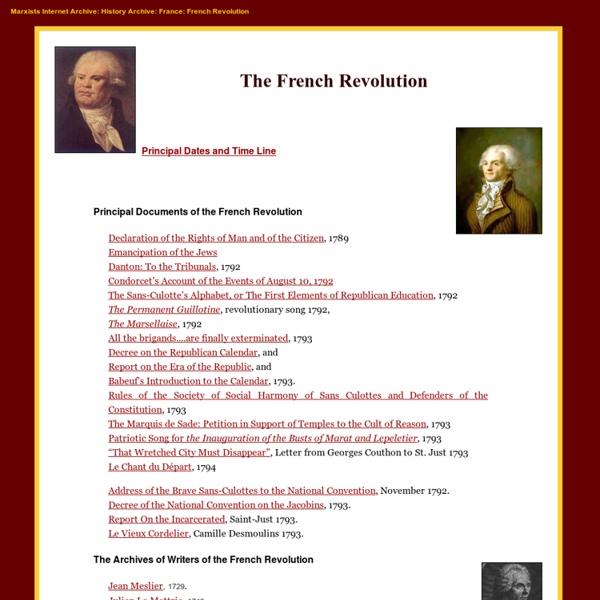



French Revolution Digital Archive Lecture: The Enlightenment and the Romantic Era How did the Enlightenment develop, and what were its common tenets? Empiricism and a rationalistic doctrine of natural rights formed the core of the Enlightenment. An empiricist believes to derived their ideas from experience. But they also held a rationalist fashion that man had natural rights determined by examination of the human conscience. With a few exceptions, the philosophers believed that all people were essentially equal, in that they all possessed reason. Philosophers during this time viewed the Church as a source of superstition, ignorance, and subservience. Although their ideas were to influence revolution, the majority of the philosophers politically were proponents of despotism, or rule by one enlightened person, a harking back to Plato's notion of the philosopher-king. Examples: Diderot (1713-1784) and Voltaire (1694-1778) Both felt that progress was made through education. Montesquieu (1689-1755) Charles-Louis de Secondat, the baron de Montesquieu. Classicism was born.
The Declaration of Independence The unanimous Declaration of the thirteen united States of America hen in the Course of human events it becomes necessary for one people to dissolve the political bands which have connected them with another and to assume among the powers of the earth, the separate and equal station to which the Laws of Nature and of Nature's God entitle them, a decent respect to the opinions of mankind requires that they should declare the causes which impel them to the separation. He has refused his Assent to Laws, the most wholesome and necessary for the public good. He has forbidden his Governors to pass Laws of immediate and pressing importance, unless suspended in their operation till his Assent should be obtained; and when so suspended, he has utterly neglected to attend to them. He has called together legislative bodies at places unusual, uncomfortable, and distant from the depository of their Public Records, for the sole purpose of fatiguing them into compliance with his measures.
Real Academia de Bellas Artes de San Fernando Los Desastres han sido explicados ocasionalmente como la consecuencia de acontecimientos concretos de carácter histórico. Ahora bien, las imágenes constituyen una meditación de carácter universal sobre la guerra, no sobre un específico conflicto bélico. Por lo que respecta a las fuentes, además de la información de primera mano proporcionada por los acontecimientos, para la elaboración de varias composiciones el artista pudo haber recurrido, tal vez, a referencias literarias y visuales. Como en el caso de los Caprichos, la identificación de estas fuentes ha sido objeto insistente del interés de los críticos. Baste mencionar la recurrente búsqueda de la procedencia literaria del tema del asno cargado de reliquias en el Desastre 66. La historiografía clásica considera que la serie comenzó a ser grabada en 1810 y se concluyó en 1820.